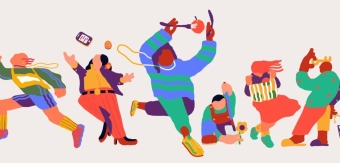How did you get into the industry?
I graduated in 2010 with a degree in Industrial Design from BIAD when it seemed that every graduate job was as an unpaid internship in either a remote setting or central London. It was demoralising to have put so much into gaining a degree that I couldn’t put to use.
Luckily, I had a PC and bootlegged copies of the latest Adobe Creative Suite. Working in shops and restaurants while learning these new programmes felt like being back at art school! I managed to rustle up a portfolio, started to get clients and after a couple of years secured a job in an agency.
Where are you based now and who do you work for?
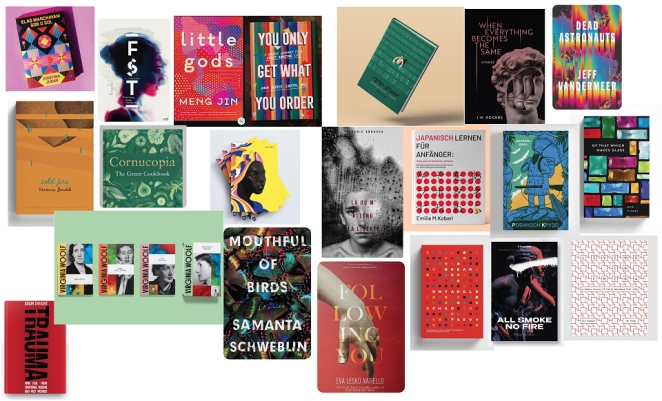
I live in the creative city of Bristol and work for an amazing agency near Oxford, Ice & a Slice as Senior Designer. Like many of us I also freelance and have carved a niche in the socio-economic sector. This variety has improved my creative output and broadened my skillset.
If you weren’t in your current industry, what would you be doing?
I have a secret ambition to one day make a short film. I’ve always loved cinema and am fascinated by the way directors create a distinctive style. I’m obsessed with the subtle ways that Hitchcock framed his scenes, the emotional build of Greta Gerwig’s films, and the absolute weirdness of David Lynch.
Can you explain your creative process? What makes it unique?
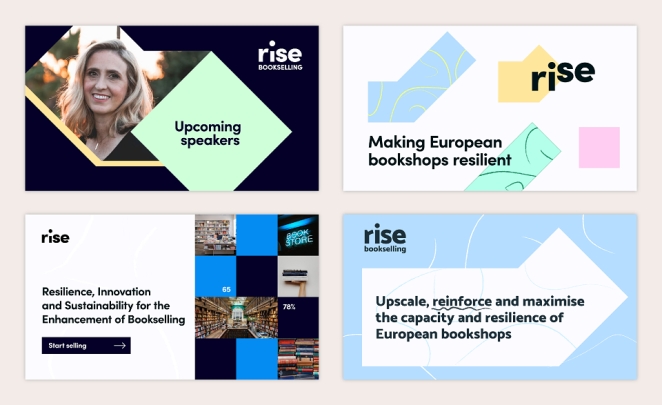
I’m not sure that it’s necessarily unique but I start with words. I try to find the emotive words in a brief, which creative ideas can ‘stick’ to. Then I’ll create a storyboard to help develop these ideas. This creates the space to experiment with wordplay, motion, typography and colour.
How would you describe your style?
I try to bring wit and play to my work. It’s important to me that the words and images speak to each other. The visuals change between clients and projects but overall I enjoy confidently using colour and form, playing with scale, and building layers of texture.
Which individuals do you gain inspiration from? Do you have any heroes in the industry?
As a teenager I’d regularly head into London and check out the Design Museum. I had no idea about design history and headed into heavy weight exhibitions without any preconceptions. Saul Bass, Cedric Price, Archigram; it was amazing seeing design presented in a museum setting. But what I remember best, and I think what pulled me into the world of Graphic Design was Alan Fletcher’s 2006 exhibition Fifty Years of Graphic Work (and Play).
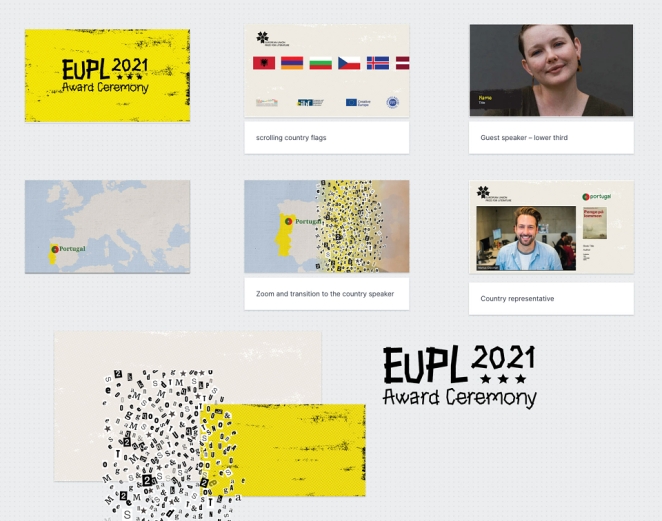
I’d never heard of this guy before, and I didn’t know who Pentagram were. But seeing the thought, the humour, and the clear joy he expressed in his work still inspires me. That was the first time I saw someone put themselves into their playful character at forefront of their work. I’d recommend to everyone to buy his book ‘the art of looking sideways’. The title of that book is spot on! An entire life in words and image.
What tips would you give to aspiring creatives looking for work?
Use whatever you’ve got to create a dynamic portfolio, projects from uni or things that you have created in your own time. A portfolio is a great way to reveal a bit of who you are as a person. Use social media to showcase your work and interests and network. Don’t give up, keep pursuing your goal and accept that there will be set backs on the way.
Invest time into researching the industries of your target clients, their markets and audiences. This will equip you with the relevant questions to ask your clients so that you can answer briefs efficiently and build ongoing relationships. Graphic design is a competitive business, but the best projects are won on trust not price.
What tips would you give to other professionals to get more clients?
You get more clients through your existing clients. Most of my freelance work has come through referrals. Building trust is key.
You don’t always have to get more clients to get more work. Sometimes it is about selling solutions rather than services. Be curious about what your client’s motivations might be. If you’re being approached to for a logo there is more than likely a story behind the request. Is this a new product/ service or a rebrand? What else could you offer them to help them with their goals?
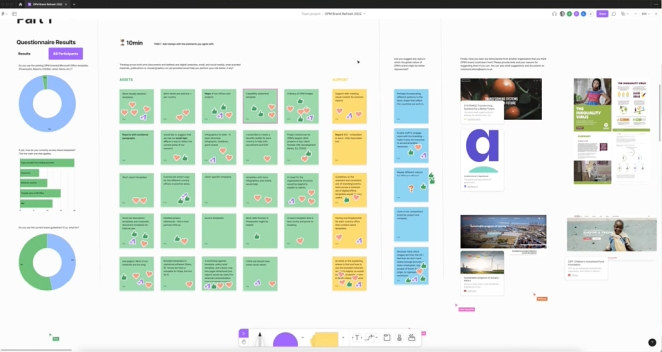
Finally, don’t undersell yourself. Worthwhile clients want to pay you, they aren’t looking to get the cheapest job possible. Quality of work is perception: people are more likely to value the work you provide if you charge appropriately for it.
What kind of tools/kit/software could you not do without?
I love Adobe Illustrator. I admit that it’s an absolute mess in terms of UI, but I’d be lost without it.
What’s your secret to staying inspired and motivated?
I have two young children so that is a new motivator to stay active and creative. Having children makes you see the world differently. Though lockdown was hard, my oldest son was an absolute joy and pulled us through those dark days with his obsessions with music and dance, and his ability to make people laugh. Fatherhood has also immersed me in children’s literature which has improved my storytelling.
Living in Bristol is also a great inspiration. There is art everywhere and the people are great. Cities are fun places to live. If I’m ever stuck on an idea I’ll take a walk and something somewhere usually helps stimulate creative energy.
What’s the work achievement you’re most proud of?
Winning People’s Choice at this year’s CreativePool awards was great but I have to say I’m most proud when I’ve nailed a brief and the client is happy.
I’m also proud of having my reworked undergraduate thesis published in the dmi:Journal. That feels like a lifetime ago but I’m still amazed it happened.
What is the one thing that you would change about the industry?
The design industry still has a diversity problem, especially when it comes to design leaders. The solution to this starts by inspiring school age children but unfortunately (as with everything else) it feels like the current UK government is taking us backwards by defunding arts in schools. Creativity underpins many of the UK’s biggest exports and is a future-proof skill. AI still sucks at creative.
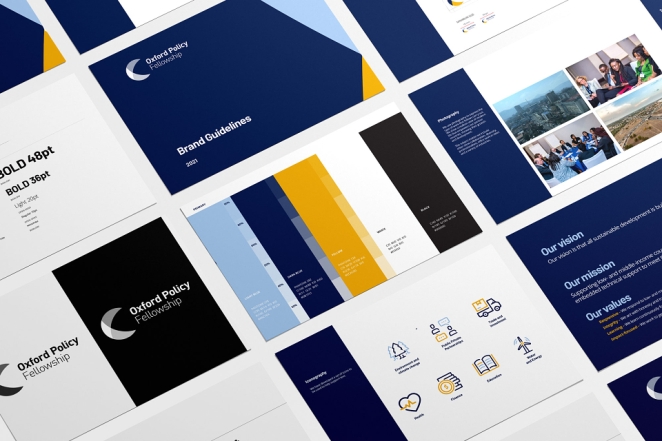
I’d like to see agencies and freelancers engage more with schools and help kids from varied backgrounds realise it’s possible to make a living in a creative field. Help lobby the UK government to fund arts in schools by signing the Creative Alliance’s petition here https://chng.it/khmC7n666h
Any websites, books or resources you would recommend?
My copy of Michael Joshnson’s book ‘Branding in five and a half steps’ is well thumbed. Recently I’ve been reading my way through the Do Book Company series. I really loved Bobette Buster’s ‘story’ (all about storytelling funnily enough) and I’m currently reading Alan Moore’s ‘Design, Why Beauty is key to everything’.
I’ve taken a lot of courses on UX/UI from Interaction Design Federation and Uxcel. I’d recommend both, but if you’re looking for something simple and bitesize then Uxcel is the one. It gives you the technical know-how to handover designs to developers – a skill not taught enough at university.
Otherwise I’m trying to take in more of the world away from design. I get a lot from taking a walk in nature, a bit of processing time away from the desk is so important!


